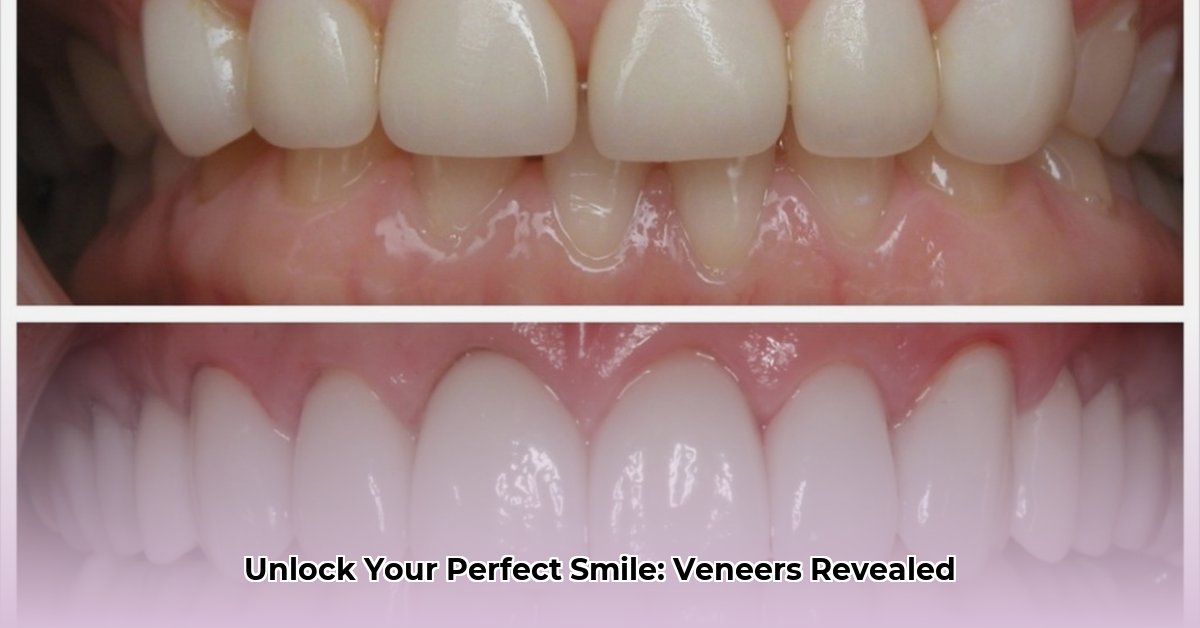Dreaming of a brighter, more confident smile? Enamel veneers could be the answer. This comprehensive guide provides everything you need to know about achieving your perfect smile with veneers – from understanding what they are and the different types available, to navigating costs and the entire treatment process. We’ll compare porcelain, composite, and no-prep veneers, outlining the pros and cons of each to help you make an informed decision. Plus, we’ll walk you through the entire process, from the initial consultation to long-term maintenance, so you can feel confident and comfortable every step of the way. For information on natural enamel restoration, check out this helpful guide. Let’s embark on your journey to a stunning smile!
Enamel Veneers: Your Comprehensive Guide to a Perfect Smile
Unveiling Smile Transformations
A dazzling smile is a universally desired feature, and enamel veneers offer a popular and effective way to achieve it. But what exactly are enamel veneers? Are they the right solution for your specific needs and smile goals? Let’s delve into the world of veneers and explore everything you need to know about achieving that picture-perfect smile through long-lasting cosmetic dentistry.
Understanding Enamel Veneers: Thin Shells, Remarkable Results
What are Dental Veneers?
Enamel veneers are ultra-thin, custom-made shells designed to perfectly fit over the front surface of your teeth. These custom restorations are crafted from high-quality materials like porcelain or composite resin. These small but mighty marvels seamlessly transform your smile, masking imperfections such as chips, cracks, discoloration, gaps, and even minor misalignments. They provide a long-term and natural-looking solution that can dramatically boost your confidence. However, with several types of veneers available, choosing the right one for your individual needs and goals is crucial – and this guide will help you do just that.
Exploring the Types of Enamel Veneers: Finding Your Ideal Match
A Variety of Veneer Options for a Customized Smile
Several veneer options exist, each offering unique advantages and catering to different needs and preferences. Let’s explore the most common types to help you determine the best fit for your smile:
- Porcelain Veneers: The Gold Standard for Aesthetics and Durability: Widely regarded as the premier choice, porcelain veneers are known for their exceptional durability, stain resistance, and remarkably natural appearance. Made from high-quality ceramic materials, they mimic the light-reflecting properties of natural teeth, resulting in a seamless and beautiful smile. Consider them the gold standard of veneers. However, they typically come with a higher price tag and usually require some minor reshaping of the natural tooth enamel to ensure a proper fit.
- Composite Veneers: A Cost-Effective and Conservative Alternative: Composite veneers offer a more conservative and budget-friendly alternative to porcelain. Made from a tooth-colored resin material, they are directly bonded to your teeth, often requiring less preparation than porcelain veneers. This makes them a less invasive option. While generally more affordable, composite veneers are slightly more susceptible to chipping and staining and may not last as long as porcelain. They are a good option for addressing minor imperfections.
- No-Prep Veneers: Minimal Intervention for a Subtle Enhancement? Marketed as the least invasive option, no-prep veneers, such as Lumineers, require minimal to no enamel removal. These ultra-thin veneers are bonded directly to the tooth surface, preserving more of the natural tooth structure. However, their long-term durability and suitability for all cases are still topics of discussion among dental professionals. While they offer a convenient and less invasive approach, some experts believe they may not be the best option for addressing significant imperfections or achieving dramatic smile transformations. More research is ongoing to assess their long-term performance.
- Removable Veneers: A Temporary Solution for Specific Occasions: Removable veneers, also known as snap-on veneers or pop-on veneers, offer a temporary and non-invasive solution for enhancing your smile. These custom-made or pre-fabricated shells simply snap over your existing teeth, instantly masking imperfections. Think of them as a “test drive” for a new smile. They are perfect for temporary fixes, special events, or experimenting with a new look. However, removable veneers are not intended for long-term use. Their lifespan is limited, and they may not look as natural or feel as comfortable as permanent veneer options. Additionally, they can sometimes affect speech and eating.
The Enamel Veneer Process: A Step-by-Step Guide to Your New Smile
Navigating the Dental Veneer Treatment
The specific steps involved in the veneer process may vary slightly depending on the type of veneer you choose and your dentist’s preferences. However, the overall process generally includes these key stages:
-
The Consultation: Defining Your Smile Goals and Assessing Suitability: This initial appointment is crucial for establishing your smile goals and determining if you are a suitable candidate for veneers. During the consultation, your dentist will thoroughly examine your teeth and gums, discuss your expectations, and assess your overall oral health. They will also evaluate factors such as tooth alignment, bite, and the presence of any underlying dental issues. This allows the dentist to determine the best veneer type for your specific needs and desired outcome. X-rays and impressions may also be taken during this appointment.
-
Preparation: Preparing the Teeth for Veneer Placement: Depending on the chosen veneer type, this stage may involve some preparation of your natural teeth to ensure a perfect fit and optimal bonding. For porcelain and composite veneers, a small amount of enamel may need to be removed from the front surface of the teeth. This creates space for the veneer and allows it to blend seamlessly with the surrounding teeth. In the case of no-prep veneers, this step may be minimal or even unnecessary.
-
Impressions: Creating a Precise Model for Custom Veneer Fabrication: Once the teeth are prepared (if necessary), your dentist will take highly accurate impressions of your teeth using a putty-like material or a digital scanner. These impressions serve as a precise model for the dental laboratory to create your custom-made veneers. Think of this as creating a blueprint for your dream smile.
-
Veneer Placement: Bonding Your New Smile: Once your custom veneers are fabricated and returned from the dental laboratory, you will return to your dentist’s office for the placement appointment. During this visit, your dentist will carefully assess the fit, shape, and color of the veneers, making any necessary adjustments to ensure a perfect match. The teeth will then be thoroughly cleaned and prepared for bonding. A special adhesive cement is applied to the back of the veneer, and it is carefully positioned on the tooth. A special light is used to activate the cement, creating a strong and durable bond. Excess cement is then removed, and your bite is checked to ensure proper alignment. This process generally takes one to two appointments, depending on the number of veneers being placed.
-
Follow-Up Care: Maintaining Your Sparkling Smile for Years to Come: Regular check-ups and professional cleanings are essential for maintaining the health and longevity of your veneers. During these visits, your dentist will monitor the condition of the veneers, assess your oral hygiene, and provide any necessary maintenance or repairs. This also allows for early detection and treatment of any potential issues, such as chipping, staining, or damage.
Pros and Cons of Enamel Veneers: Weighing the Benefits and Drawbacks
Making an Informed Decision About Veneers
Choosing the right type of veneer depends heavily on your individual needs, preferences, budget, and smile goals. To help you make an informed decision, here’s a handy comparison table outlining the key advantages and disadvantages of each veneer type:
| Feature | Porcelain Veneers | Composite Veneers | No-Prep Veneers | Removable Veneers |
|---|---|---|---|---|
| Appearance | Exceptionally natural-looking; excellent aesthetics | Good aesthetics, but potentially less natural | Moderate aesthetics; quality varies significantly | Least natural-looking; can appear somewhat bulky |
| Durability | Long-lasting (10-15 years or more); very strong | Moderate lifespan (5-7 years); prone to wear | Variable lifespan; possibly shorter than others | Short lifespan; prone to damage and breakage |
| Cost | Generally the highest | Moderate cost | Moderate to high cost | Lowest cost |
| Invasiveness | More invasive; requires some enamel preparation | Less invasive; minimal tooth preparation | Least invasive; potentially no tooth preparation | Non-invasive |
| Stain Resistance | Excellent | Fair; more prone to staining than porcelain | Fair | Poor; easily stained |
| Best For | Significant smile transformations; long-term results | Minor imperfections; budget-conscious patients | Subtle enhancements; minimal enamel alteration | Temporary fixes; special occasions |
Factors Affecting Longevity: Maximizing the Lifespan of Your Veneers
Protecting Your Investment for a Lasting Smile
Several factors can influence how long your veneers will last and maintain their beautiful appearance. Understanding these factors is crucial for maximizing the lifespan of your veneers and protecting your investment:
-
The Material Matters: Porcelain vs. Composite: Porcelain veneers typically outlast composite veneers due to their inherent strength, durability, and stain resistance. Porcelain is a more robust material that can withstand daily wear and tear better than composite resin.
-
Oral Hygiene is Key: Brushing, Flossing, and Regular Check-ups: Meticulous brushing and flossing are non
- Shop Bento Box for Sale To Find Your Ideal Lunch Container - December 6, 2025
- Lunch Box That Fits Bento Box Neatly for Daily Use - December 5, 2025
- Japanese Lunch Bag Does Double Duty as Bento Carrier and Tote - December 4, 2025










